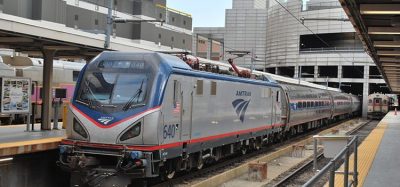High-speed rail leads California towards a sustainable transportation system
Posted: 21 August 2018 | Global Railway Review | No comments yet
California High-Speed Rail Authority’s recent report details all progress regarding sustainable operations and construction in high-speed rail.


The California High-Speed Rail Authority (Authority) has issued its annual Sustainability Report, detailing how they are already putting sustainability into action.
The report updates the progress made in 2017 and the results of the comprehensive approach to designing, constructing and operating high-speed rail in a sustainable manner. The report highlights accomplishments in each aspect of the Authority’s Sustainability Framework.
“Our goal is to create the greenest infrastructure project in the nation, both in its operations and construction,” said Authority CEO, Brian Kelly. “Sustainability is at the core of our mission and is one of the values that guide our work. Sustainability is integral to our policies and to how we conduct our day-to-day business.”
2018’s report highlights the Authority’s actions to offset emissions, such as working with Tree Fresno and Cal Fire to launch the Authority’s Urban Forestry Program – elementary and middle-school students have planted 200 trees at the West Fresno Middle School in the Central Valley.
“As a first mover in benchmarking its sustainability actions and performance, the Authority has demonstrated its commitment to ambitious leadership in helping the State accelerate the transition to a low carbon future,” said Rick Walters, GRESB Director Infrastructure.
The Authority continues to follow green construction practices, such as requiring contractors to use clean diesel engines, recycling steel and concrete from construction and demolition materials, and diverting construction and demolition waste from landfills.
Key sustainability accomplishments presented in the report include the recycling of 99 per cent of all construction materials (keeping 118,000 tonnes of waste material out of landfills), the continued use of Tier 4 equipment on construction sites (reducing nitrogen oxide, carbon monoxide and particulate matter), the continued engagement with small businesses and the preservation of more than 2,500 acres of natural habitat.
The Authority relies on the Global Reporting Initiative (GRI) Reporting Guidelines, the world’s most widely adopted sustainability reporting framework, to inform how data is selected and reported. This process reveals environmental, social and economic impacts that matter most to our stakeholders.








